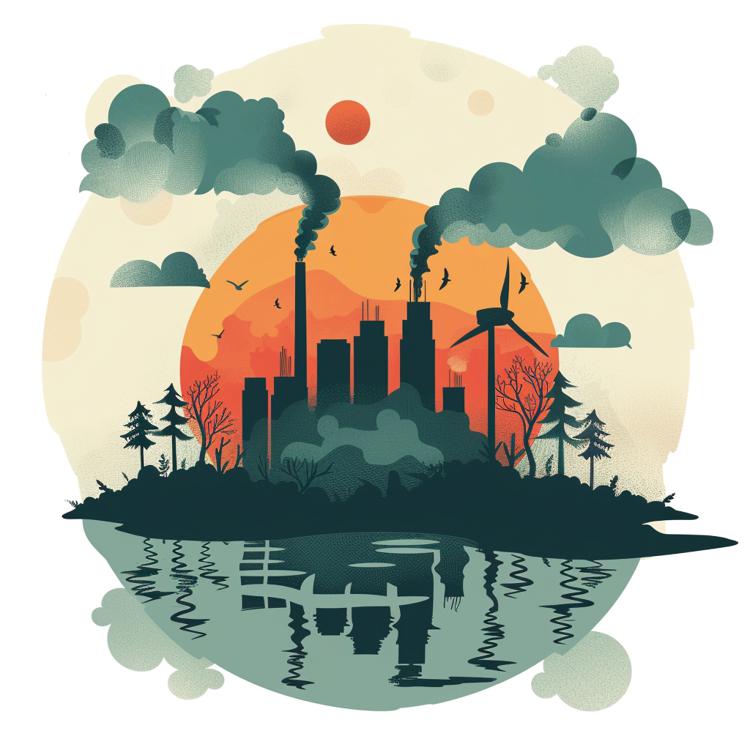Raising the bar
EU has been the first to propose a new 2040 climate target as required by the Paris Agreement


COP29 is due to be held in late 2024 in Baku, Azerbaijan, and countries are setting new climate targets. Under the Paris Agreement reached in 2015, a new round of climate targets for mitigating and adapting climate change are to be submitted by the parties before COP30 in Belem, Brazil.
The European Union is striving to demonstrate its leadership on climate action. It released its "Communication on Europe's 2040 climate target and path to climate neutrality by 2050", in which it proposes reducing the net greenhouse gas emissions by 90 percent by 2040 relative to 1990 as the EU's mid-term climate target. Nevertheless, this is considered to be a case of the spirit is willing but the flesh is weak.
According to the European Climate Law passed in 2021, the EU should set a climate target for 2040 within six months after the First Global Stocktake of the Paris Agreement issued by COP28 in December 2023, then incorporate it into the European Climate Law. At the same time, the proposed 2040 climate target is also the basis for formulating the Nationally Determined Contribution goal by 2035 submitted to the United Nations Framework Convention on Climate Change before COP30.
The European Scientific Advisory Board on Climate Change recommended that the EU must strive for net emission reductions of 90 percent to 95 percent by 2040, relative to 1990.
The European Commission regards achieving the 2030 climate goals, ensuring a just transition, adjusting the EU's energy structure, reducing its industrial and transport sector emissions, developing green agriculture and the bioeconomy, and empowering climate actions through policies and innovation as the main ways to achieve the 2040 climate target. Needless to say, the EU's climate actions have encountered many obstacles. Two different evaluation reports, by the European Court of Auditors and the European Commission in 2023, both indicate that the EU is struggling to achieve its "FIT 55" target by 2030.
From the perspective of geopolitics, the Ukraine crisis has dragged down the EU's green transformation. Funding has become a dilemma. The EU is allocating funds to prolong the Ukraine crisis, consequently reducing its support for its green transition.
Politics is another factor that can't be ignored. Considering the decision-making process of the EU, there are still variables in the 2040 climate target. On the one hand, the proposed target has just been suggested by European Commission President Ursula von der Leyen and the official proposal will be handed in by the next president of the European Commission after the European Parliament election in June. It is unknown whether the next Commission president will treat green policies as a priority. On the other hand, the proposed target must be reviewed and discussed by the European Council and the Council of the EU to achieve a consensus, and ultimately it must be approved by the European Parliament.
The EU is not united as one. Hungary is a member state that opposes the climate goals. Some right-wing and nationalist parties oppose the climate goals as a policy proposition in this year's elections. What's more, some stakeholders such as farmers are opposing the climate target. The EU's climate goals will also cause wider ripples. As an economy that has announced its mid-term climate goals early, the EU has put paradigm pressure on other countries, similar to the situation that the EU proposed the "climate neutrality" goal in 2019. Across the Atlantic, the United States is once again facing a partisan climate split. The US presidential election will affect the future global climate governance process this year, and the EU climate goals may be a strong card for Joe Biden.
It is clear that the EU will continue to apply its trade defense instruments to protect its industry and ensure resilient supply chains, as it believes that China and the US engage in unfair trade by means of fiscal incentives, public subsidies and integration to lead dominance of many raw materials, electric vehicles and clean energy supply chains.
Although the EU 2040 climate target has not yet been finalized, its assessment of mid- to long-term international trends, technological innovation, and industrial competition still provides a valuable reference for other economies. In addition, the EU has fully leveraged the modeling studies and think tanks.
At present, China is formulating its 2035 climate target under the Paris Agreement. As the world's largest developing country, China is expected to basically achieve modernization and build a beautiful China by 2035. Its Nationally Determined Contribution to climate change is also a very important factor for economic and social transformation, the development of new quality productive forces and the construction of an ecological civilization.
Chai Qimin is a professor and director of the Department of the Strategy and Planning at the National Center for Climate Change Strategy and International Cooperation. Liu Bohan is an assistant professor at the Department of the Strategy and Planning at the NCSC. The authors contributed this article to China Watch, a think tank powered by China Daily. The views do not necessarily reflect those of China Daily.
Contact the editor at editor@chinawatch.cn.


































